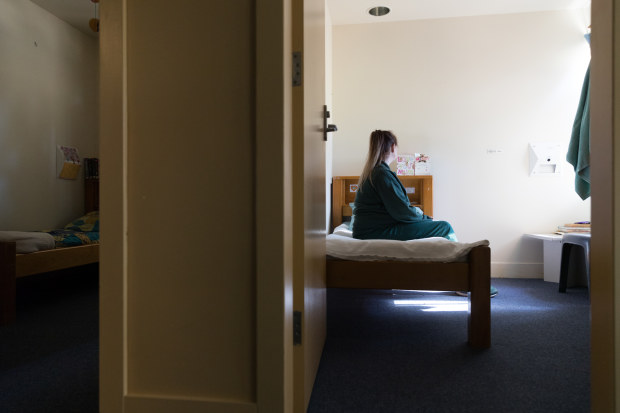Repeat offenders account for half of prison costs - Financial Review Tom Burton Government editor -
Entrenched recidivism is seeing over half of Australia’s prison population returning to jail within two years, accounting for more than half the annual $5.2 billion that is spent on prisons, the Productivity Commission says.
The latest data, released as a part of an annual report on government services, shows 53.1 per cent of released prisoners had returned to either prison or community corrections within two years in the year ended June 30 2021.
Returns to prison for Indigenous groups were higher in all jurisdictions, with more than two thirds (64.1 per cent) of released Indigenous people back in the correctional system within two years.
The new government services data supports a 2021 Productivity Commission report that found Australia has a high level of recidivism when compared internationally.
Compared with Australia’s 53.1 per cent, Norway’s recidivism rate after two years is 20 per cent, in Austria it is 26 per cent and in Finland, it is 36 per cent. The US state of Oregon and the Canadian province of Ontario have recidivism rates similar to Finland.
Some younger prisoners are receiving computers in their rooms in a bid to reduce the recidivism rate.
There is a wide disparity nationwide with South Australia having a recidivism rate two years after release of 39.3 per cent. This is two-thirds that of NSW’s rate of 58.7 per cent.
The new justice service data show the total cost of justice was almost $20.9 billion in financial 2021, up 4.5 per cent from the year earlier, and accounting for about 6.9 per cent of government expenditure.
Police services was the largest contributor (64.8 per cent), followed by corrective services (26.1 per cent) and courts (9.2 per cent). Nationally, expenditure per person on justice services was $812 in fiscal 2021.

According to the Productivity Commission almost 60 per cent of prisoners have had a prior prison sentence, and this rate is even higher for Aboriginal and Torres Strait Islander prisoners.
“High recidivism rates, combined with a large proportion of prisoners on remand or serving short sentences, suggest that many prisoners cycle in and out of prison, following a ‘churn’ pathway through the criminal justice system,” the report says.
This is likely to be more common among Aboriginal and Torres Strait Islander prisoners.
Criminologists argue the main issue is lack of investment in post-jail support.
“The key issue is what’s happening for people when they actually walk out the prison gates,” said Mindi Sotiri, executive director of the Justice Reform Initiative.
“We know that in fact, the answers to recidivism lie outside in the community. We’ve got more than 50 per cent of people that are leaving prison are homeless. So, that’s a really critical issue in terms of risk of return to prison.”
“When we look at other things in terms of what are the other risks in terms of return to prison, we have things like an absence of access to drugs, alcohol services, absence of access to mental health services, absence of access to disability services.”
Most people leaving prison do not have access to any of those services, Ms Sotiri said.
The Productivity Commission cited Australian Institute for Health and Welfare data that 62 per cent of discharged prisoners have no paid work lined up to start within two weeks of leaving prison.
About 36 per cent either did not know whether they had a valid Medicare card or did not have one on the first day of release. A similarly large proportion (44 per cent) expected to stay in short-term or emergency accommodation.
“That’s the critical structural issue, and if we’re really serious about reducing recidivism, we need to get our heads around it,” Ms Sotiri said.
Professor Gary Sturgess, chairman of Public Service Delivery at Australia & New Zealand School of Government and a former adviser to NSW Premier Nick Greiner, has worked with public and private prison managers for a number of decades and is sceptical about the willingness to invest in support services.
“There are no votes in prisons,” Mr Sturgess said, adding that the UK had tried to focus reform efforts on a “Through the Gate” program.
“There is a lot of low-hanging fruit in just getting the logistics of their exit from prison right.”
“Designing KPI’s [key performance indicators] for prisons that focus on relatively short-term interventions such as having a job on release and housing support makes a difference.”
He said broader strategies such as “following the person” would also give better data and insights at a micro level rather than system policy approaches.
The lack of integrated services meant prisoners fell through the cracks and were not being picked up by service agencies and community providers, Mr Sturgess said.
Ms Sotiri said layered on top of the lack of support services was the fact that prison itself is “criminogenic”. “The more times you go to prison, the more likely you are to keep going to prison.”
The Productivity Commission cited data that 23 per cent of prison entrants have been in adult detention once or twice before. Nearly a third (32 per cent) of prison entrants had previously been in prison five or more times and high-risk recidivism is associated with frequent and short sentences.
Attempts to motivate private operators through social impact bonds to reduce recidivism had not proved effective, Mr Sturgess said, adding that difficulties agreeing to an appropriate metrics had thwarted attempts to reduce reoffending.
The churn in prisoners comes as the Productivity Commission government services report also found major backlogs in the court system with 40.3 per cent of Supreme and Federal Court cases not completed within 12 months.
